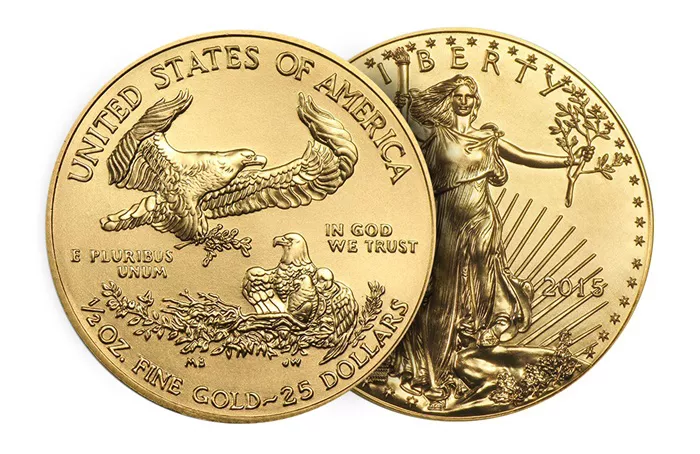Gold has long been a symbol of wealth, stability, and investment security. It’s used in various forms, from jewelry and electronics to a hedge against economic uncertainty. Investors and collectors often measure their gold holdings in terms of ounces, with the troy ounce being the standard unit for precious metals. This article will provide a detailed guide on how to determine the value of 1/2 ounce of gold, explore factors that influence gold prices, and offer insights into the gold market.
What Is 1/2 Oz of Gold
Gold is commonly measured in troy ounces, a unit of weight used specifically for precious metals. One troy ounce is equivalent to approximately 31.1035 grams. When discussing 1/2 oz of gold, it refers to 0.5 troy ounces or approximately 15.55175 grams. The value of this quantity of gold can fluctuate based on the market price of gold, which is influenced by various economic, geopolitical, and market factors.
How to Calculate the Value of 1/2 Oz of Gold
To determine the current value of 1/2 oz of gold, follow these steps:
Find the Current Gold Price: The price of gold is quoted in USD per troy ounce. This price is updated frequently on financial news websites, commodity exchanges, and through precious metal dealers. For instance, as of today, let’s assume the price of gold is $1,900 per troy ounce.
Use the following formula to calculate the value of 1/2 oz of gold:
- Value of 1/2 oz of Gold=Current Gold Price per Troy Ounce×0.5
Using the example price of $1,900:
- Value of 1/2 oz of Gold=$1,900×0.5=$950
Therefore, 1/2 oz of gold would be worth $950 at this price.
Let’s consider a different scenario where the current gold price is $1,950 per troy ounce. Applying the same formula:
- Value of 1/2 oz of Gold=$1,950×0.5=$975
Hence, 1/2 oz of gold would be worth $975.
See also: How Much Is 1/100 of an Ounce of Gold Worth?
Factors Influencing Gold Prices
Understanding the factors that influence gold prices is crucial for investors and collectors. Here are some key elements:
Market Demand and Supply
Demand: High demand for gold, especially during economic downturns or geopolitical uncertainties, can drive prices up. Investors often turn to gold as a safe haven when traditional investments become volatile.
Supply: Gold mining production levels and discoveries of new gold deposits can affect supply. If supply outstrips demand, prices may decrease, and vice versa.
Economic Conditions
Inflation: Gold is often seen as a hedge against inflation. When inflation rises, the purchasing power of currency decreases, making gold a more attractive investment.
Interest Rates: Lower interest rates can increase gold prices as they reduce the opportunity cost of holding non-yielding assets like gold. Conversely, higher interest rates can lead to lower gold prices.
Geopolitical Events
Political Instability: Conflicts, wars, and political unrest can lead to increased demand for gold as a safe-haven asset. Investors may flock to gold during times of uncertainty.
Trade Policies: Changes in trade policies or tariffs can impact gold prices by affecting global trade dynamics and economic stability.
Currency Fluctuations
USD Value: Gold is priced in USD, so fluctuations in the value of the US dollar relative to other currencies can affect gold prices. A weaker USD typically leads to higher gold prices and vice versa.
Market Speculation
Investor Sentiment: Speculative trading and investor sentiment can influence gold prices. Market trends, predictions, and investor behavior can cause short-term fluctuations in gold prices.
See also: How Much Is 1/1000 of an Ounce of Gold Worth?
How to Track Gold Prices
To stay updated on gold prices and accurately determine the value of your gold holdings, consider these sources:
Financial News Websites: Websites like Bloomberg, CNBC, and Reuters provide real-time gold prices and market news.
Commodity Exchanges: Exchanges such as the New York Mercantile Exchange (NYMEX) and the London Metal Exchange (LME) list current gold prices and trading information.
Precious Metal Dealers: Many dealers offer current gold prices and market analysis. They may also provide historical data and forecasts.
Financial Apps: Mobile apps for investing and trading often include real-time gold price updates and historical charts.
Gold as an Investment
Investing in gold can be done through various avenues:
Physical Gold
Gold Bullion: Physical gold bars and coins are direct investments in gold. They are typically bought and sold based on the current spot price.
Jewelry: While not a primary investment vehicle, gold jewelry can hold value and may be a form of investment.
Gold ETFs and Mutual Funds
Gold Exchange-Traded Funds (ETFs): These funds trade on stock exchanges and aim to track the price of gold. They offer liquidity and ease of trading.
Gold Mutual Funds: These funds invest in gold mining companies or gold-related assets. They provide exposure to the gold sector without holding physical gold.
Gold Mining Stocks
Investing in stocks of companies engaged in gold mining can provide indirect exposure to gold prices. Stock performance may be influenced by factors beyond gold prices, including company-specific news.
Gold Futures and Options
Futures Contracts: These are agreements to buy or sell gold at a predetermined price on a future date. They are often used by traders and institutional investors.
Options Contracts: These give investors the right, but not the obligation, to buy or sell gold at a specific price before a certain date.
Conclusion
Understanding the value of 1/2 oz of gold involves knowing the current gold price and applying a simple calculation formula. The price of gold is influenced by various factors, including market demand, economic conditions, geopolitical events, and currency fluctuations. By staying informed about these factors and using reliable sources for gold price updates, investors and collectors can accurately determine the value of their gold holdings and make informed investment decisions. Whether through physical gold, ETFs, stocks, or futures, gold remains a significant asset in investment portfolios, providing diversification and a hedge against economic uncertainties.
Related Topics:

